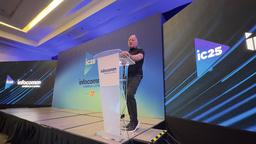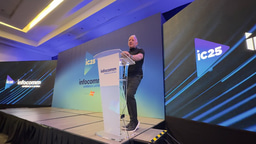The Art of Storytelling Through Technology: Revolutionising Modern Museums

In today’s digital age, museums are no longer just houses of artefacts – they’re becoming immersive storytelling powerhouses. As designers of themed attractions and immersive experiences, we’ve witnessed first-hand how technology can transform traditional exhibits into unforgettable journeys through time and space.
The Evolution of Museum Storytelling
Remember walking through museums as a child, reading static placards and peering through glass cases? Those days are rapidly changing. Modern museums are embracing digital innovation to create dynamic, interactive experiences that capture imaginations and leave lasting impressions.
Our work with The Fram Museum showcases this evolution perfectly. By integrating cutting-edge technology with traditional exhibits, we’ve helped transform the story of polar exploration into an adventure visitors can actually experience, not just observe. This project illustrates how digital tools can breathe new life into historical narratives, making them relevant and engaging for today’s audiences.
Technology: The Modern Storyteller’s Toolkit
What makes today’s museum experiences so compelling? It’s the seamless blend of:
- Interactive Displays: Imagine stepping into a room where the walls respond to your presence, telling you stories of the past through motion-activated projections and touch-sensitive screens. These displays invite visitors to become part of the narrative, creating a personal connection that static exhibits simply can’t match.
- Adaptive Digital Narratives: By using AI and machine learning, museums can tailor stories to fit the interests of each visitor. Whether you’re fascinated by the technical aspects of polar exploration or the human stories behind the expeditions, digital narratives can adapt in real-time, ensuring a personalised experience.
- Immersive Environments: Through the use of virtual and augmented reality, visitors can find themselves transported to the icy landscapes of the Arctic or the deck of a historical ship. These environments engage multiple senses, providing a rich, layered experience that deepens understanding and empathy.
- Multi-sensory Experiences: By combining soundscapes, visual effects, and tactile elements, museums can create environments that fully engage visitors’ senses. This approach not only enhances the storytelling but also makes the learning experience memorable and impactful.
Creating Memorable Museum Experiences
The secret to successful museum design isn’t just about implementing the latest technology – it’s about using that technology to serve the story. Here’s what we’ve learned:
- Integration is Key: Technology should enhance the physical exhibits, not overshadow them. The best installations are those where the tech feels like a natural extension of the exhibit, seamlessly blending into the narrative.
- Authenticity Matters: Historical accuracy must remain at the core of every digital enhancement. Visitors trust museums to provide truthful representations of history, and technology should be used to support this mission, not distort it.
- Engagement is Essential: Interactive elements should encourage exploration and discovery. By designing experiences that invite visitors to touch, explore, and question, museums can foster a deeper understanding and appreciation of the subject matter.
- Personalisation Powers Connection: Different visitors should be able to experience the story in their own way. By offering multiple pathways through an exhibit, museums can cater to diverse interests and learning styles, ensuring a more inclusive experience.
Looking to the Future
As we look ahead, we’re excited about emerging trends in museum technology:
- AI-driven Personalised Experiences: Imagine a museum visit where the exhibits change to reflect your interests, offering deeper insights into topics you care about. AI can analyse visitor interactions and preferences, tailoring the experience to maximise engagement.
- Extended Reality (VR/AR) Installations: These technologies are set to revolutionise how we interact with exhibits, offering new ways to explore and understand complex subjects. From walking through ancient cities to witnessing historical events first-hand, VR and AR bring history to life like never before.
- Mobile-integrated Storytelling: With smartphones in nearly every pocket, museums have a unique opportunity to extend the visitor experience beyond their walls. By integrating mobile apps and digital content, museums can offer guided tours, additional information, and even interactive challenges.
- Social Sharing Capabilities: In today’s connected world, experiences are often shared online. By providing easy ways for visitors to capture and share their experiences, museums can reach wider audiences and create buzz around their exhibits.
The Bottom Line
In our experience designing themed attractions and immersive experiences, we’ve found that the most successful museum installations are those that use technology to strengthen the human connection to the story being told. When done right, technology becomes invisible, leaving visitors with memories of the story, not the screens that told it.
Blue Alchemy Labs specialises in creating immersive experiences and themed attractions that blend storytelling with cutting-edge technology. Want to learn more about how we can help transform your space? Contact us.
-
Xchange Advocates are recognized AV/IT industry thought leaders and influencers. We invite you to connect with them and follow their activity across the community as they offer valuable insights and expertise while advocating for and building awareness of the AV industry.






Please sign in or register for FREE
If you are a registered user on AVIXA Xchange, please sign in
This is a great article ! Coincidence that I just visited the Bible Museum in DC. There where a lot of instances of this technology being used. From interactive walls for kids to have an AR experience to whole projection mapped experience about the Old Testament stories. With a 3-D sound system, to integrating lights to show weather or story building. One of my favorite parts of the museum was the touchscreen tables that where able to share information about the various old scrolls that where found and you had to match it to other pieces, it was great to learn how to match these pieces of antiquity on a smart screen.
Thanks for sharing again! Love to see this technology being used to share history and storytelling!
The Museum of the Bible is a great example all this future tech being used in clever and innovative ways. I've yet to see it in person but all the feedback says it's amazing. Thanks for sharing.
Musuem AV is the new frontier for the industry, so cool!
And it's moving at an exponential rate, image what we'll be discussing in 2, 5 or 10 years from now?